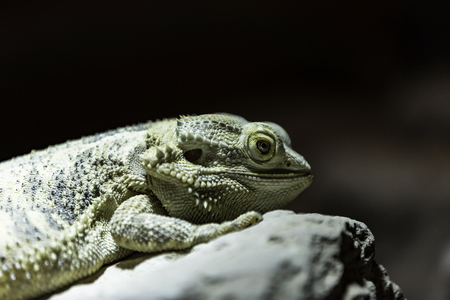Introduction to Reptile Keeping in Britain
In recent years, reptile keeping has quietly blossomed into one of Britain’s most cherished and intriguing hobbies. Across the UK, more and more households are welcoming lizards, snakes, tortoises, and geckos—not just as pets, but as companions that offer a unique window into the natural world. For many Britons, reptiles provide an alternative to traditional furry friends, captivating both adults and children with their mesmerising behaviours and stunning diversity.
The popularity of reptiles as pets in Britain stems from a blend of curiosity and compassion. Enthusiasts are drawn not only by the fascinating adaptations and ancient lineage of these creatures but also by the distinctive sense of connection they foster. The companionship of a reptile is different: it’s quieter, often more contemplative, and invites us to slow down and observe the subtle rhythms of life.
However, embracing reptile guardianship brings with it a set of responsibilities that go far beyond the basics. From providing precise environmental conditions to understanding specialised diets and health needs, reptile keepers commit to ongoing learning and care. This commitment ensures that each animal thrives while deepening our appreciation for biodiversity.
Below is a brief comparison highlighting why many Britons are choosing reptiles as pets:
| Traditional Pets (Dogs/Cats) | Reptiles | |
|---|---|---|
| Space Required | Often need large indoor/outdoor areas | Many species thrive in small enclosures |
| Noise Level | Can be noisy (barking, meowing) | Silent companions |
| Allergy Friendly | Common allergens present | Low allergen risk |
| Lifespan Range | 10–20 years (average) | Varies widely; some live over 50 years |
| Interaction Style | Affectionate, playful | Observational, calming presence |
Caring for reptiles is not just about meeting their physical needs—it’s about nurturing respect and empathy for creatures often overlooked in mainstream pet culture. As we explore the top ten most popular reptiles to keep as pets in Britain, let us celebrate both the joys and profound responsibilities that come with sharing our homes with these remarkable animals.
Key Considerations Before Getting a Reptile Pet
Choosing a reptile companion is a significant commitment, and in Britain, its vital to approach this decision with both heart and mind. Reptiles are fascinating creatures, but their needs differ greatly from those of more traditional pets. Taking a compassionate stance means ensuring your future pet will thrive, not just survive. Here are the most important aspects to consider before welcoming one of the top 10 most popular reptiles into your home:
Ethical Sourcing
Responsible ownership begins with ethical sourcing. Many reptiles in the UK pet trade are bred in captivity, which helps protect wild populations and ensures animals are better adapted to life with humans. Always choose reputable breeders or rescue organisations, avoiding wild-caught specimens whenever possible.
Welfare & Habitat Requirements
Each species has unique environmental needs that must be met for their wellbeing. Creating a suitable habitat is essential—this means providing the right temperature, humidity, lighting, and space. Neglecting these details can lead to stress or serious health issues.
| Reptile Type | Habitat Size | Heating & Lighting Needs |
|---|---|---|
| Leopard Gecko | Minimum 60cm tank | Heat mat, UVB optional |
| Corn Snake | Minimum 90cm vivarium | Heat lamp or mat, low UVB |
| Bearded Dragon | Minimum 120cm vivarium | Basking lamp, strong UVB |
Long-term Care Commitment
Many reptiles have impressive lifespans—some snakes and tortoises can live for decades. Consider whether you can provide consistent care throughout their lives. This includes regular feeding, cleaning, health checks, and appropriate veterinary support.
The Importance of Enrichment
Reptiles benefit from mental stimulation just as much as physical care. Providing enrichment—like climbing branches for lizards or hides for snakes—helps prevent boredom and encourages natural behaviours.
A Note on Legislation
In Britain, certain reptiles may require special licences or have restrictions due to conservation laws. Always check local regulations before bringing home any exotic animal.
Caring for reptiles is a rewarding journey when approached with empathy and preparation. By understanding their needs from the start, you honour these remarkable creatures and foster a positive relationship for years to come.
![]()
3. Popular Reptile Species Among British Pet Owners
The United Kingdom’s fascination with reptiles is nothing short of heartwarming, as more households welcome these unique companions into their lives. Unlike traditional pets, reptiles offer a gentle presence and encourage patience and understanding—qualities that resonate deeply within our communities. Here, we explore some of the most cherished reptile species gracing British homes, delving into what makes each one such a wonderful friend.
| Species | Why They’re Loved |
|---|---|
| Leopard Gecko | Renowned for their docile nature and expressive faces, they are perfect for beginners and families alike. |
| Corn Snake | Gentle and easy to handle, corn snakes bring vibrant colours and low-maintenance joy to their keepers. |
| Bearded Dragon | With their sociable personalities and interactive behaviour, bearded dragons become true family members. |
| Crested Gecko | Nocturnal charmers that thrive in smaller spaces, ideal for urban dwellers seeking a quiet companion. |
| Royal Python (Ball Python) | Celebrated for their calm temperament and striking patterns, they are especially popular among older children and adults. |
Each of these reptiles brings something special to the table: the silent companionship of a gecko basking in the afternoon sun, the gentle curiosity of a snake exploring its habitat, or the comforting presence of a dragon perched contentedly on your shoulder. In Britain, keeping reptiles isn’t just about owning an animal—it’s about fostering empathy, learning respect for all creatures great and small, and finding joy in the quiet moments shared across species. For many, these reptiles become more than pets; they are confidants, teaching patience and inspiring awe at the natural world’s wonders.
4. Creating the Ideal Home: Reptile Husbandry in the UK Climate
Britain’s weather is famously unpredictable, with chilly winters, damp air, and limited sunshine. For reptile enthusiasts, creating a comfortable and healthy environment at home requires thoughtful planning and a touch of ingenuity. Ensuring your reptilian companions—from corn snakes to leopard geckos—thrive means replicating their natural habitats as closely as possible, despite the challenges of the UK climate.
Understanding the Basics: Temperature, Humidity, and Light
Most popular reptiles in Britain originate from warmer, drier climates. Therefore, investing in reliable heating systems and UV lighting is essential. Below is a helpful table summarising general habitat requirements for some of the top pet reptiles:
| Species | Ideal Temperature (°C) | Humidity Level (%) | Lighting Needed |
|---|---|---|---|
| Bearded Dragon | 24-35 (basking) | 30-40 | UVB & Heat Lamp |
| Corn Snake | 22-28 | 40-50 | Day/Night Cycle |
| Leopard Gecko | 24-32 | 30-40 | Low UVB, Heat Mat |
| Crested Gecko | 22-26 | 50-70 | No UVB Required* |
| Royal Python | 27-32 (basking) | 50-60 | Low UVB, Heat Source |
*Occasional low-level UVB can be beneficial.
Sourcing Equipment Locally and Ethically
The British market offers a range of vivariums, heating mats, ceramic bulbs, and humidity controls designed to suit our cooler homes. It’s always worth sourcing equipment from reputable suppliers who prioritise animal welfare and sustainability. Consider energy-efficient options to keep running costs down while still providing optimal conditions for your pet’s health.
A Safe and Enriching Environment Matters Most
Beyond basic needs, enrichment is vital for reptiles’ well-being. This might mean adding safe plants, branches for climbing, or hides to mimic burrows—simple touches that help reptiles express natural behaviours. Regularly monitoring temperature and humidity levels using digital thermometers and hygrometers ensures their environment remains stable throughout the year.
The commitment to responsible reptile husbandry in Britain not only keeps your pets happy but also sets a positive example for others who may wish to welcome these unique creatures into their homes. By blending practical know-how with genuine care, you can offer your scaly companions a warm sanctuary no matter what the British weather brings.
5. Community, Support and Responsible Ownership
In Britain, reptile enthusiasts are fortunate to be part of a compassionate and knowledgeable community, united by their love for these remarkable creatures. Whether you’re a seasoned keeper of corn snakes or a newcomer fascinated by the gentle leopard gecko, support is always at hand. Across the country, reptile clubs and societies offer a welcoming environment where experiences are shared and guidance is freely given. These groups often host regular meetings, educational workshops, and even family-friendly exhibitions, giving everyone—from children to adults—the chance to connect and learn.
Charities and Organisations Making a Difference
The British reptile-keeping landscape is further enriched by dedicated charities and non-profit organisations. They work tirelessly to promote responsible ownership, rescue abandoned pets, and advocate for reptile welfare. Below is a table outlining some key groups:
| Organisation | Focus | How They Help |
|---|---|---|
| The British Herpetological Society (BHS) | Conservation & Education | Publishes journals, offers advice, hosts events |
| Reptile Rescue Centres (various) | Rescue & Rehoming | Cares for neglected reptiles; finds new homes |
| The Reptile Welfare Trust | Welfare Advocacy | Campaigns for better welfare standards in the UK |
| The Federation of British Herpetologists (FBH) | Industry Representation | Supports keepers and retailers with best practices |
Learning Never Stops: Resources for Ongoing Education
The journey of reptile keeping in Britain is one of lifelong learning. Enthusiasts have access to an impressive range of resources—from comprehensive online forums and Facebook groups to local pet shops that pride themselves on ethical advice. Many zoos and wildlife centres also run interactive sessions tailored to aspiring keepers. The emphasis is always on responsible care, ensuring every animal’s needs are met in line with modern welfare standards.
A Culture of Care and Compassion
What truly sets the British reptile-keeping community apart is its culture of empathy. It’s about more than simply owning a pet; it’s about building bonds, respecting each species’ unique requirements, and helping others along the way. By joining this vibrant network—whether through volunteering at a rescue centre or attending a herpetology seminar—you become part of a collective effort to ensure reptiles across Britain live healthy, enriched lives.
6. Final Thoughts: Respecting and Cherishing Every Creature
As we draw our exploration of the top 10 most popular reptiles to keep as pets in Britain to a close, its important to reflect on the heart of what it means to share our homes with these remarkable beings. Whether youre captivated by the gentle nature of a corn snake or the striking elegance of a leopard gecko, each reptile invites us into a world that is both ancient and awe-inspiring. In Britain, where an ethos of animal welfare runs deep through our communities, keeping reptiles as pets is not merely a hobby—its a profound responsibility.
Reptiles, much like any living creature, depend on us for their wellbeing. Their unique needs—ranging from precise temperature control to carefully balanced diets—demand patience, empathy, and ongoing education. Its crucial that we honour their natural behaviours and origins, ensuring they are never treated as mere novelties or ornaments. Instead, let us cherish every scale, every flicker of tongue, as part of the wondrous tapestry of life that makes our world richer and more diverse.
To guide responsible ownership and ethical care, here’s a simple reminder:
| Aspect | Best Practice |
|---|---|
| Habitat | Replicate natural environment; provide hiding places and climbing structures. |
| Diet | Offer species-appropriate food; avoid processed treats. |
| Health | Regular check-ups with exotic vets; monitor for signs of distress. |
| Handling | Gentle interaction; respect individual temperament. |
Let us remember: Every reptile entrusted to our care is deserving of respect and compassion. Through mindful stewardship, we not only enrich our own lives but also contribute to a culture where all creatures are valued and protected. May our shared journey with these fascinating animals inspire kindness, curiosity, and enduring respect for the wildness that still dwells within them—and within ourselves.


